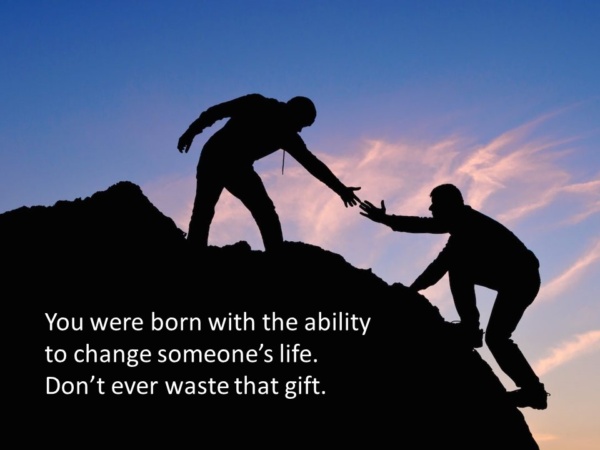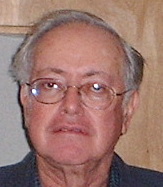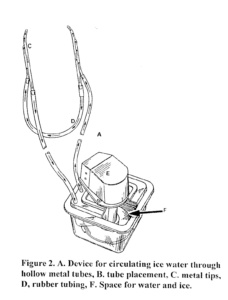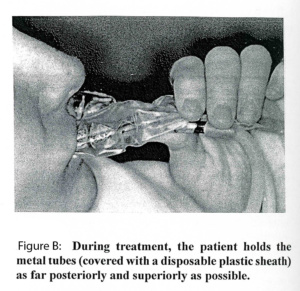
How Doctors Approach Health Care MUST change!
It is no secret that the conventional health care establishment in medicine takes a dim view of alternative treatments. Conventional wisdom says alternative treatments are unscientific. However, many alternative treatments not only work, they have far less side effects and are far less invasive than their conventional counterparts.
Interestingly, this rivalry is not new. In the 1840s, the “popular health movement” brought homeopathy to an America that already had a system of conventional treatment. The movement strengthened as Americans came to resent the excesses of “heroic” conventional treatments and the arrogant political behavior of their practitioners. “Not only did they bleed and purge people to death”, explains Dr. Andrew Weil, a noted author and medical researcher, “they tried to put out of business competitors who attempted to heal the sick with gentler methods”. The popular health movement successfully wiped almost all of the laws pertaining to medicine off the books that were created by the conservative allopaths. The allopaths countered by forming the AMA in 1846. One of the AMA’s first actions was the launching of an offensive against homeopathy. A long, drawn-out war ensued that was fought in every town and in virtually every hospital in America. Even as late as 1900, 22 homeopathic medical colleges produced one sixth of the country’s medical practitioners. But by 1923, only 2 schools remained. [Weil, Dr. Andrew; Health and Healing: Understanding Conventional and Alternative Medicine; Houghton Mifflin Company; Boston; 1988.]
Ironically, alternative care is enjoying a resurgence because the very attitudes of conventional medicine that contributed to the rise of the popular health movement are back with a vengeance. Patients want choices and many want to choose the least invasive care with the fewest side effects. If the health care establishment were truly honest, it would encourage a blend of both approaches to health care that would be in the best interest of patients. Doctors treat individuals and it is important to choose the best treatment(s) for each individual. There is no “one size fits all.”
Even the placebo effect should have a place in health care. What really matters is that patients get better! It is well known that belief alone can elicit medical cures. “Any treatment”, explains Dr. Weil, “whether allopathic drugs and surgery, homeopathic remedies, chiropractic manipulations, shamanistic rituals or Chinese acupuncture–includes two distinct elements: the direct effect of the treatment itself (if any) and the belief it elicits in both practitioner and patient. Treatments devoid of significant effects that work on the principle of belief alone are well known as placebos. It is important to realize that without belief, no treatment can be a success.
Placebos can relieve severe postoperative pain, induce sleep or altertness, elicit remission of disease, and cause warts to fall off. They can also elicit powerful side effects, such as nausea, headaches, allergic reactions, damage to organs, and addiction. Placebos in this category are known as nocebos. Dr. Weil says that there are three dimensions of belief involved in the placebo response–the patient’s belief in the method, the doctor’s belief in the method, and the patient’s and doctor’s belief in each other. When belief in the method is altered, the change in the placebo effect will also change the effectiveness of that treatment. “Just as doctors and patients can lose faith in a drug like Darvon”, says Dr. Weil, “they can gain it in a procedure like acupuncture.” The fact that placebos work at all, he explains, is evidence that the body has an innate healing ability.
The alternative movement challenges allopathy in several positive ways. First, it offers entirely new ways of thinking. Current medical practices are based on theories that are less than a century old. Theories are often based on assumptions of reality that may be incorrect. Says Dr. Weil, “enlightened scientists never forget that theories are pictures of reality, not reality itself.” Scientists too often fall into the trap of accepting theories as proven fact without any evidence whatsoever!
Some alternative care theories are based on different assumptions that are quite plausible and may turn out to have scientific validity. Homeopathy, for example, is based on the “Law of Similars.” According to homeopathic theory, “a substance that produces a certain set of symptoms in a healthy person has the power to cure a sick person manifesting those same symptoms.” The substance is diluted so that the medicine contains an infinitesimal amount. The infinitesimal amount is supposed to make the drug safer and more effective. There are many examples of minute substances which can exert powerful effects in the body. Thyroid hormone circulates in the blood in 1 part to 1010 parts of plasma, LSD can affect consciousness in doses as low as one millionth of a gram and penicillin can inhibit some bacteria in 10-9 concentrations. Allergists also use infinitesimal amounts of antigens to desensitize an individual with allergies.
Research has already uncovered some major challenges to traditional theories of disease. A widely held notion, for example, is that the mind is distinct from the body. Conservative techniques tend to treat both as separate entities. However, new evidence indicates that they are really linked. For example, endorphins, an opiate chemical produced in the brain, have been shown to be involved in analgesia and anesthesia. These chemicals were recently discovered to be produced in response to placebos and to acupuncture. Naloxone, a narcotic antagonist, has also been shown to interfere with the pain -relieving effects of both. What’s more, the same endorphins and their receptors from the brain have been located in the immune system! The identification of this biochemical mechanism suggests that the mind is involved in the healing process and perhaps cannot be separated from the physical process.
Unfortunately, big business interests have a history of interfering with the incorporation of alternative treatments into mainstream care. Doctors allopathically trained are indoctrinated to look down on alternative practitioners. Is it any wonder that so many doctors are biased against them? Alternative practitioners are considered to be “fringe” practitioners not to be taken seriously.

Do you think this type of bias doesn’t happen in Dentistry? Think again. It was my privilege to practice dentistry across the street from an extremely brilliant TMJ and facial pain specialist—Dr. Mark Friedman. He was an anatomist as well as a dentist. I sent him patients and I saw him demonstrate treatments—with my own eyes–that gave instantaneous relief to patients.
Dr. Friedman discovered from his anatomy background that a branch of the maxillary nerve lies below the mucosa just beyond the upper third molars. Inflammation of this area is often the cause of migraine headaches and symptoms of inflammation, such as increased temperature can be detected in this area. The treatment of this area with ice, anti-inflammatory medications and low-level laser therapy were all tools that he used to give patients relief from pain.

 Dr. Friedman invented and patented a chilling device that applies cold to the mucosa behind the upper third molars. The device has a very simple design: two probes that circulate ice water from a bath with a fish tank pump. The patient holds the probes in the third molar area for 30 minutes for a single treatment.
Dr. Friedman invented and patented a chilling device that applies cold to the mucosa behind the upper third molars. The device has a very simple design: two probes that circulate ice water from a bath with a fish tank pump. The patient holds the probes in the third molar area for 30 minutes for a single treatment.
Dr. Friedman used a variety of different chilling protocols depending on the severity of pain for each patient. He conducted an enormous research program at Westchester Medical Center where he used this device on pregnant women who could not be treated with standard medications. His research showed conclusively that these patients actually did better on his treatment protocol than they would have on standard medications. His published papers were meticulous.
So why is this device not being used everywhere? The reason is clear. Dr. Friedman was relegated to “fringe” status by an establishment that smeared him with a lack of creditability. Dr. Friedman and I were kindred spirits because we had to endure a biased and all-powerful establishment dedicated to guarding the status quo (gatekeepers). I really admired Dr. Friedman’s sheer genius and creativity and it bothered me a great deal that he did not get the recognition he deserved for his life’s work from either the medical or the dental profession.
How sad. How can we advance as health care professionals when practitioners are too closed minded to even consider new treatments that are not endorsed by the establishment? Dr. Friedman passed away suddenly, and his life’s work went by the wayside. What a terrible tragedy!
Dr. Friedman was a true academic and knew how to write research papers, so he wrote many scholarly papers, textbooks and chapters in textbooks. Who is reading them now? No one. I think this is an outrage, so I published many of his works in the Documents Library on the ONWARD website. One of his documents is a free download for general practitioners that outlines how to do a proper TMJ exam. It is my hope that his work will be rediscovered by someone who has the power to teach others and bestow on him the credit for his life’s work that he was unable to achieve during his lifetime.
One of the reasons I started the ONWARD website with some like-minded colleagues is that I do not want unforgivable tragedy of Dr. Friedman to happen to the life work of both my father and me. Together, my father and I have amassed 70 years of documentation for our full coverage restorative techniques and this documentation cannot and should not be ignored because they don’t fit in with big business and entrenched institutional interests! Till my dying day I will do everything in my power to ensure that we are not relegated to “fringe” status by the Dental Profession.
Become the best practitioner in full coverage restorative dentistry that you can be! Don’t settle! Join the ONWARD program and learn how to do crown and bridgework with excellence and confidence, how to save “hopeless” teeth, and how to provide new options for patient treatment that you never thought of. Visit the website and join here: https://theonwardprogram.com/membership/
Dr. Feinberg is also available to give presentations. His CV and speaker packet is posted on the website. Dr. Feinberg can be reached at info@theONWARDprogram.com



